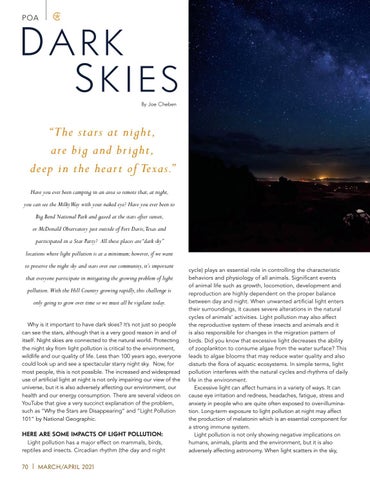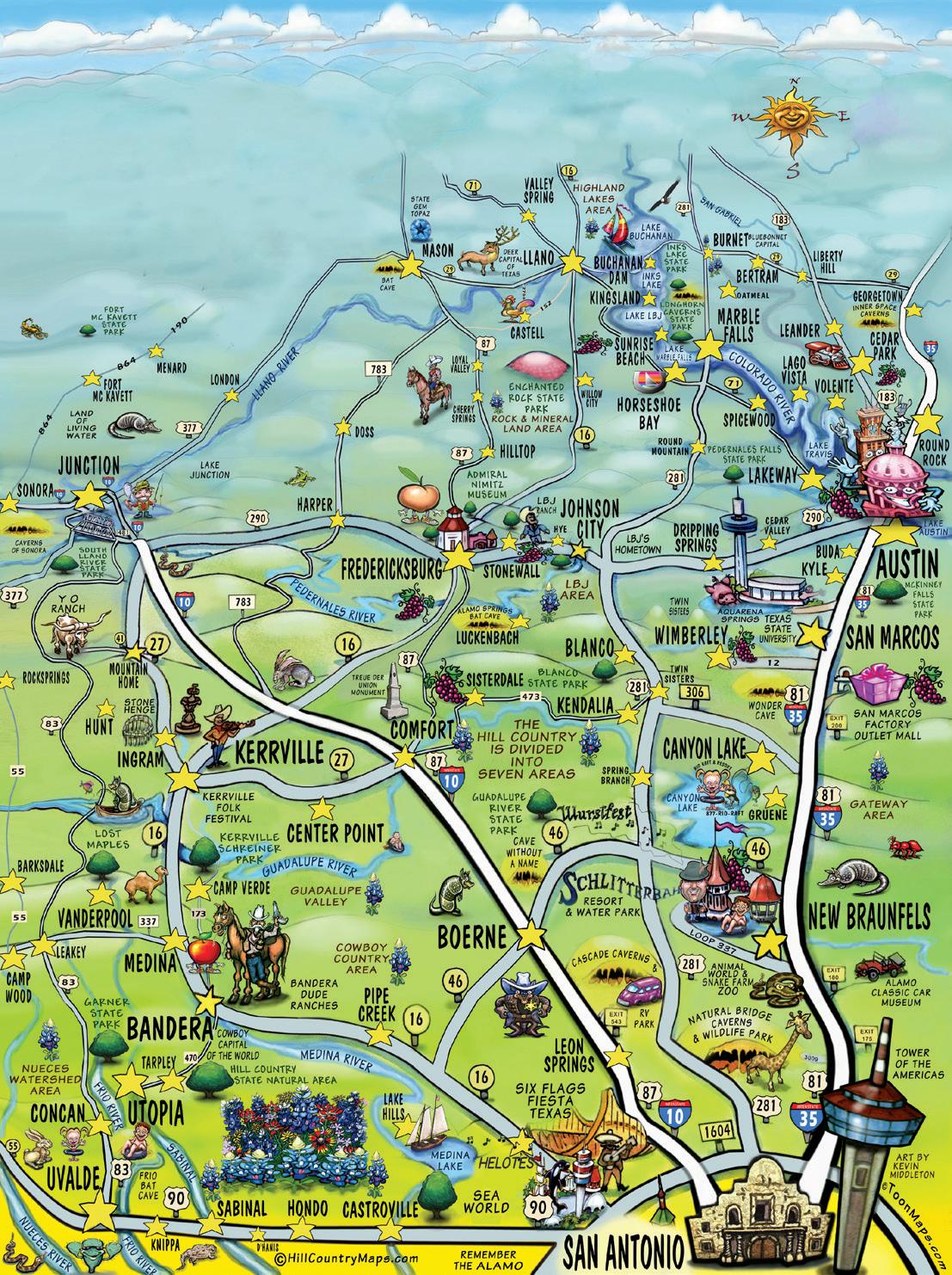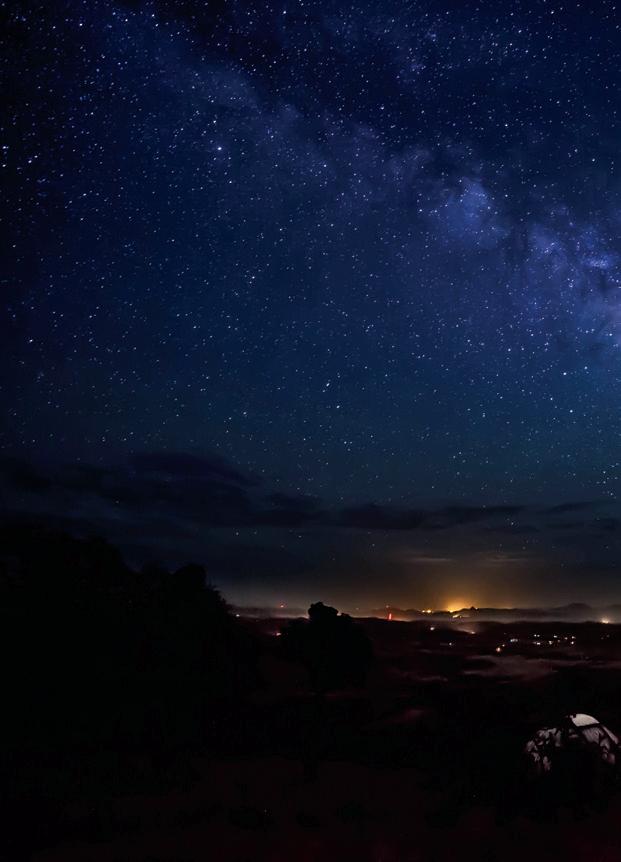POA
D ARK S KIE S By Joe Cheben
“The stars at night, are big and br ight, deep in the hear t of Texas.” Have you ever been camping in an area so remote that, at night, you can see the MilkyWay with your naked eye? Have you ever been to Big Bend National Park and gazed at the stars after sunset, or McDonald Observatory just outside of Fort Davis,Texas and participated in a Star Party? All these places are “dark sky” locations where light pollution is at a minimum; however, if we want to preserve the night sky and stars over our community, it’s important that everyone participate in mitigating the growing problem of light pollution. With the Hill Country growing rapidly, this challenge is only going to grow over time so we must all be vigilant today. Why is it important to have dark skies? It’s not just so people can see the stars, although that is a very good reason in and of itself. Night skies are connected to the natural world. Protecting the night sky from light pollution is critical to the environment, wildlife and our quality of life. Less than 100 years ago, everyone could look up and see a spectacular starry night sky. Now, for most people, this is not possible. The increased and widespread use of artificial light at night is not only impairing our view of the universe, but it is also adversely affecting our environment, our health and our energy consumption. There are several videos on YouTube that give a very succinct explanation of the problem, such as “Why the Stars are Disappearing” and “Light Pollution 101” by National Geographic.
HERE ARE SOME IMPACTS OF LIGHT POLLUTION: Light pollution has a major effect on mammals, birds, reptiles and insects. Circadian rhythm (the day and night
70 | MARCH/APRIL 2021
cycle) plays an essential role in controlling the characteristic behaviors and physiology of all animals. Significant events of animal life such as growth, locomotion, development and reproduction are highly dependent on the proper balance between day and night. When unwanted artificial light enters their surroundings, it causes severe alterations in the natural cycles of animals’ activities. Light pollution may also affect the reproductive system of these insects and animals and it is also responsible for changes in the migration pattern of birds. Did you know that excessive light decreases the ability of zooplankton to consume algae from the water surface? This leads to algae blooms that may reduce water quality and also disturb the flora of aquatic ecosystems. In simple terms, light pollution interferes with the natural cycles and rhythms of daily life in the environment. Excessive light can affect humans in a variety of ways. It can cause eye irritation and redness, headaches, fatigue, stress and anxiety in people who are quite often exposed to over-illumination. Long-term exposure to light pollution at night may affect the production of melatonin which is an essential component for a strong immune system. Light pollution is not only showing negative implications on humans, animals, plants and the environment, but it is also adversely affecting astronomy. When light scatters in the sky,









